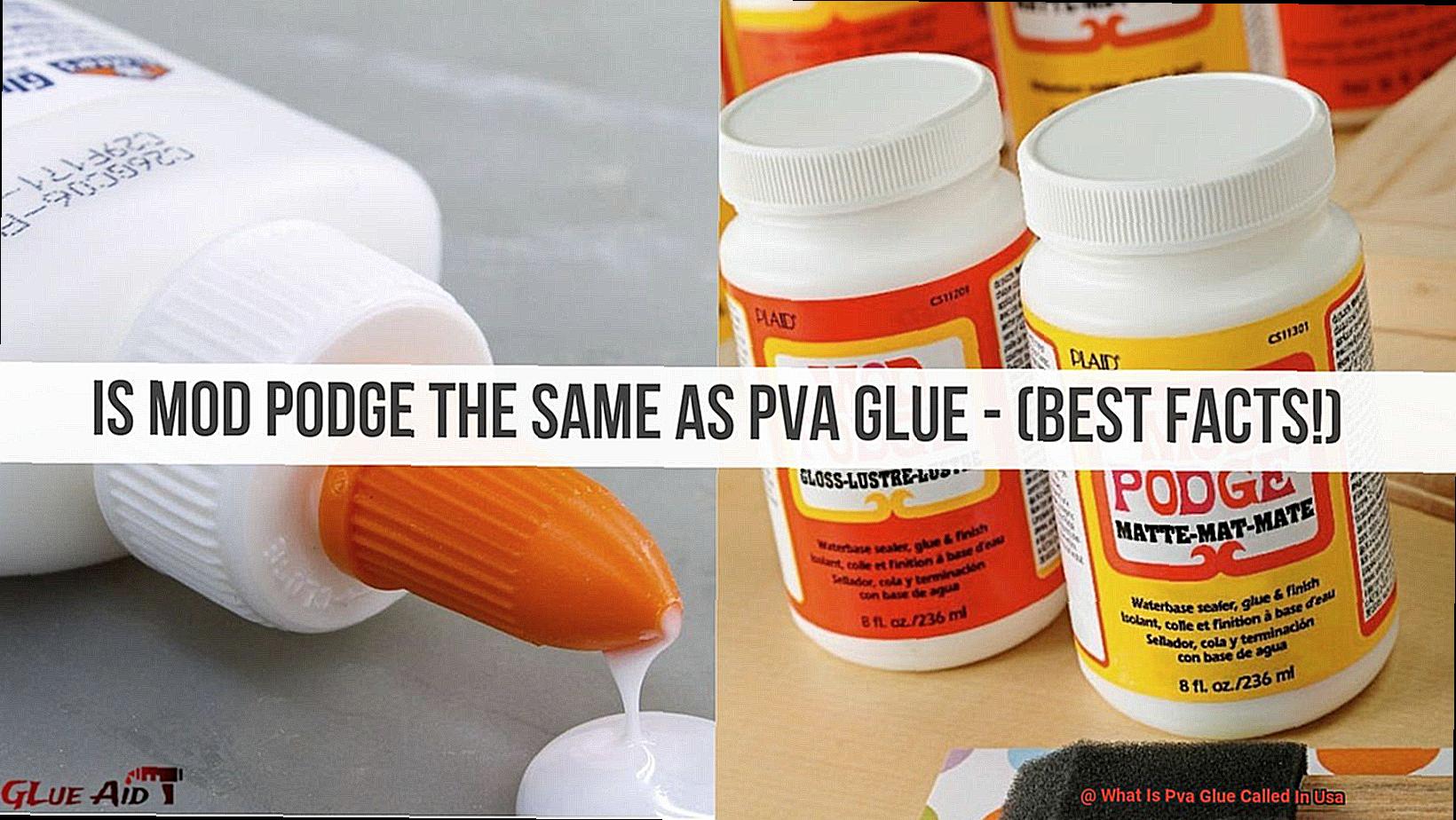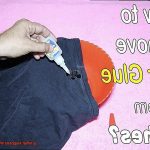Today, we’re getting up close and personal with a glue that’s probably already hanging out in your craft drawer or toolshed. In the good ol’ USA, Polyvinyl Acetate (PVA) glue goes by a couple of different names – “white glue” or “wood glue.”
You know the one – it’s that trusty squeeze bottle adhesive that sticks paper, cardboard, and even wood together like nobody’s business. But don’t let its humble appearance fool you.
PVA glue is a superstar when it comes to versatility and benefits. Whether you’re a crafting whiz or a woodworking wizard, this stuff will quickly become your adhesive soulmate.
So grab your goggles and let’s explore the magical world of PVA glue – from its superpowers to its everyday uses, find out why it’s an essential in households all across America.
The Versatility of PVA Glue
Contents
PVA glue, also known as polyvinyl acetate glue, is a remarkable adhesive with countless applications across industries. Explore the vast versatility of PVA glue as we delve into its uses in arts and crafts, woodworking, bookbinding and paper crafts, and construction and home improvement.
Arts and Crafts:
PVA glue has become an essential tool in arts and crafts due to its non-toxic nature and simplicity. It effortlessly bonds materials like paper, fabric, and certain plastics, making it perfect for creating collages, scrapbooks, and other craft projects. With its clear drying properties, PVA glue seamlessly blends into the artwork without a trace.
Woodworking:
For woodworkers, PVA glue is the go-to adhesive for joining wood pieces. Its robust bond stands up against heat and moisture, ensuring lasting durability in furniture construction or cabinetry. Woodworkers appreciate its ease of application and quick drying time, allowing them to progress efficiently with their projects.
Bookbinding and Paper Crafts:
In the world of bookbinding and paper crafts, PVA glue shines as a reliable choice for securely binding pages without causing damage. Its adhesive properties keep pages intact while maintaining flexibility, making it indispensable for handmade books, journals, or intricate paper sculptures.
Construction and Home Improvement:
PVA glue’s versatility extends beyond arts and crafts into construction and home improvement projects. It bonds drywall, tiles, and other building materials flawlessly. Additionally, PVA glue acts as an excellent sealant or primer before painting surfaces, enhancing paint adhesion and creating a flawless finish.
Advantages of Using PVA Glue
PVA glue offers a multitude of advantages that make it a top choice for professionals and amateurs alike. Its versatility is one of its greatest strengths, as it can bond a wide range of materials together, including wood, paper, fabric, and certain plastics. Whether you’re working on a woodworking project or creating a masterpiece with various materials, PVA glue can provide a strong and durable bond.
Ease of use is another advantage of PVA glue. Unlike some other adhesives that require mixing or special application techniques, PVA glue can be applied directly from the bottle. Its smooth consistency makes it easy to spread evenly on surfaces, making it a popular choice for both professionals and DIY enthusiasts.
Safety is always a concern, especially when crafting with children or pets around. That’s why PVA glue is such a fantastic option. It’s non-toxic, meaning it doesn’t contain any harmful chemicals. So you can have peace of mind knowing that you’re using a safe adhesive that won’t harm anyone.
Another advantage of PVA glue is its ability to dry clear. Once it has dried completely, it becomes almost invisible. This means you don’t have to worry about unsightly residue or visible glue lines. It’s perfect for applications where aesthetics are important, such as working with transparent materials or creating intricate designs.
We’ve all been there – applying adhesive only to realize we made a mistake or need to reposition something. With PVA glue, this isn’t a problem. It’s water-soluble, so if you need to adjust or fix something, simply dampen the area with water and make the necessary changes. This feature makes PVA glue particularly useful for crafts and projects that require precision.
Lastly, PVA glue has a relatively long shelf life. As long as you store it properly in a cool and dry place, it can last for several years without losing its effectiveness. This means you can have a bottle of PVA glue on hand whenever you need it, without worrying about it drying out or becoming unusable.
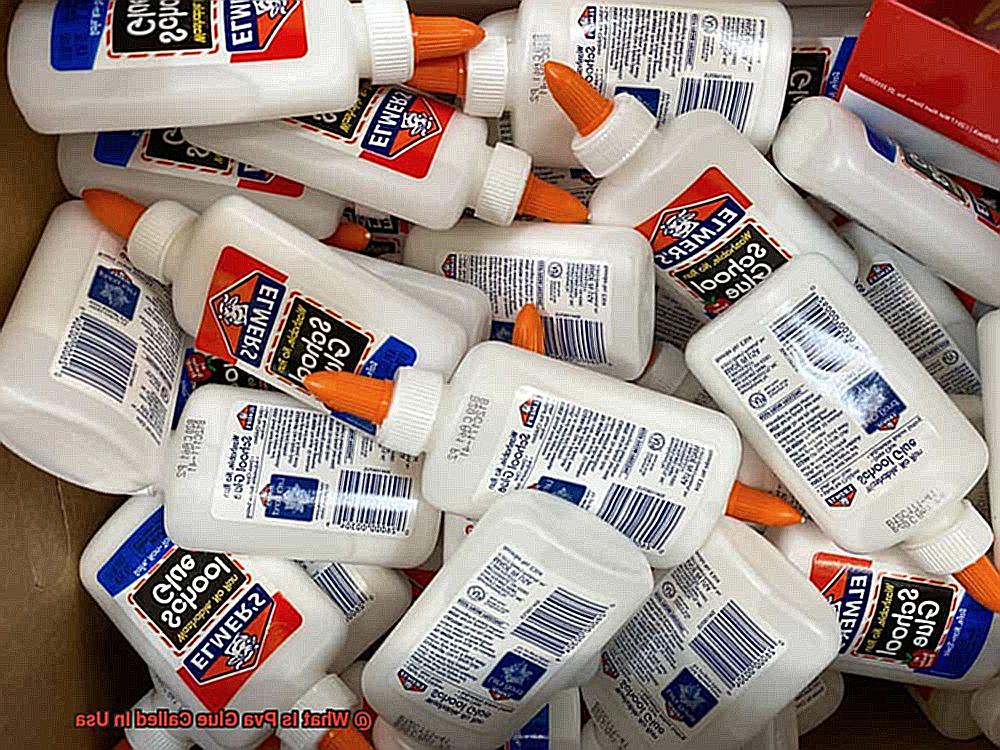
Applications of White Glue in Arts and Crafts
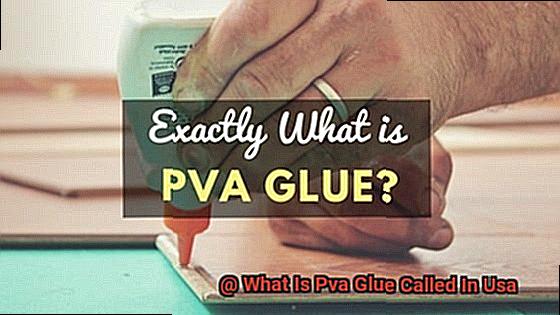
Unleash your creativity and elevate your arts and crafts projects to new heights with the mighty white glue, also known as PVA glue. This versatile adhesive is a game-changer for any artist or crafter, offering a wide range of applications that will astonish you. Let’s delve into the world of white glue and explore its incredible uses in the realm of arts and crafts.
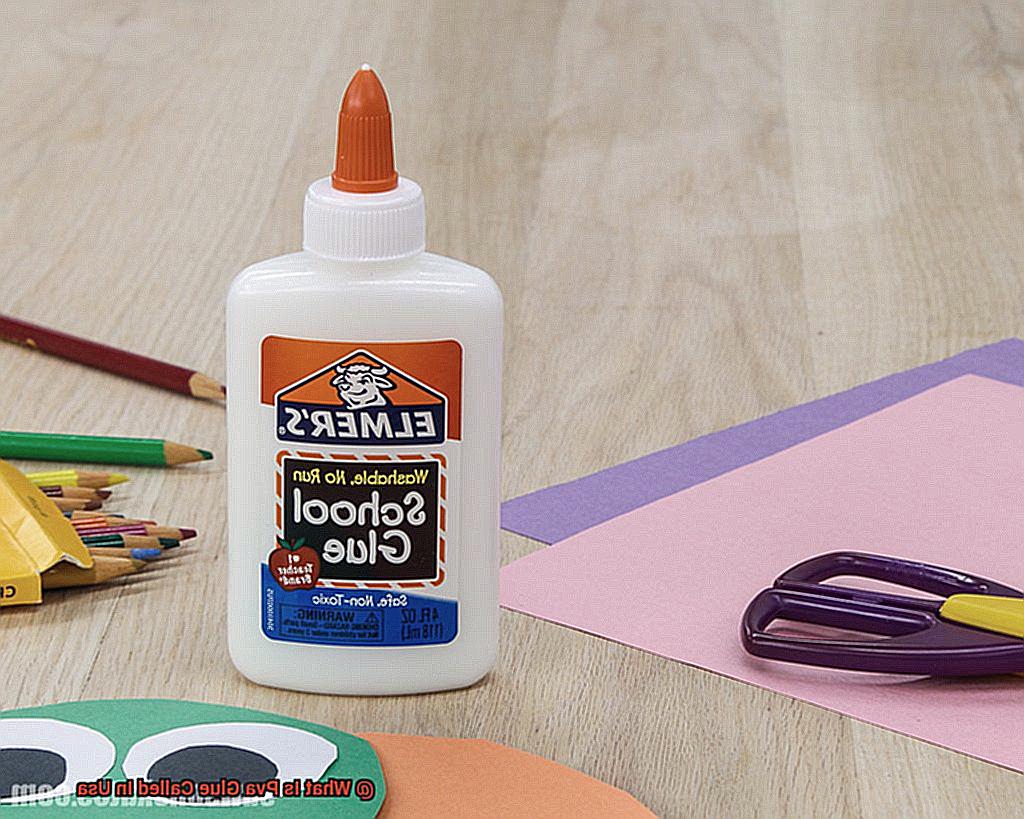
First and foremost, let’s talk about paper-based projects. Whether you’re into collages, scrapbooking, or crafting paper mache sculptures, white glue reigns supreme as the go-to adhesive. It effortlessly binds paper together, creating a robust bond that can withstand the test of time.
But that’s just the beginning. White glue isn’t limited to paper alone. It also works wonders on lightweight materials like fabric, felt, and foam. This makes it perfect for fabric-based crafts such as fabric collage or fashioning fabric embellishments. The possibilities are endless.
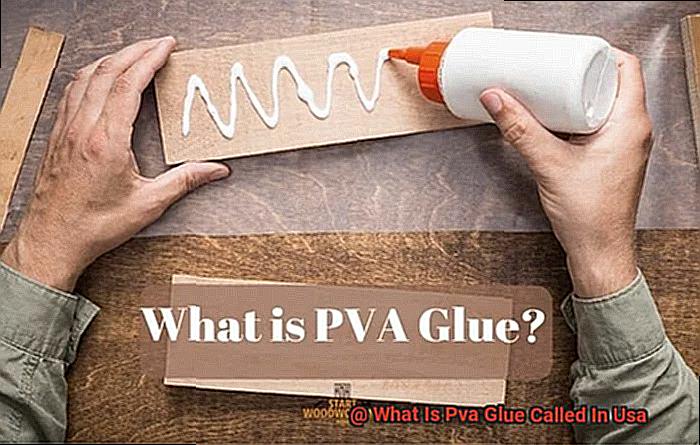
If woodworking is more your style, fear not. White glue has got your back. It excels at joining wood pieces together, providing a sturdy bond that dries clear for a seamless finish. Say goodbye to unsightly glue lines and hello to professional-looking woodwork.
But wait, there’s more. White glue can be your jewelry-making best friend. Use it to secure beads, gemstones, or other small embellishments onto jewelry bases like metal or plastic findings. With its formidable grip, your creations will sparkle and stay in place.
And here’s a little secret: mix white glue with water to create a decoupage medium. Decoupage involves adhering cut-out paper or fabric designs onto various surfaces like wood, glass, or ceramics. The diluted white glue serves as both an adhesive and a protective sealant for your stunning designs.
But hold on, we’re not done yet. White glue can also be mixed with other materials such as sand or sawdust to create texture in specific craft projects. Additionally, it can be used as a topcoat to provide a glossy finish. The possibilities truly know no bounds.
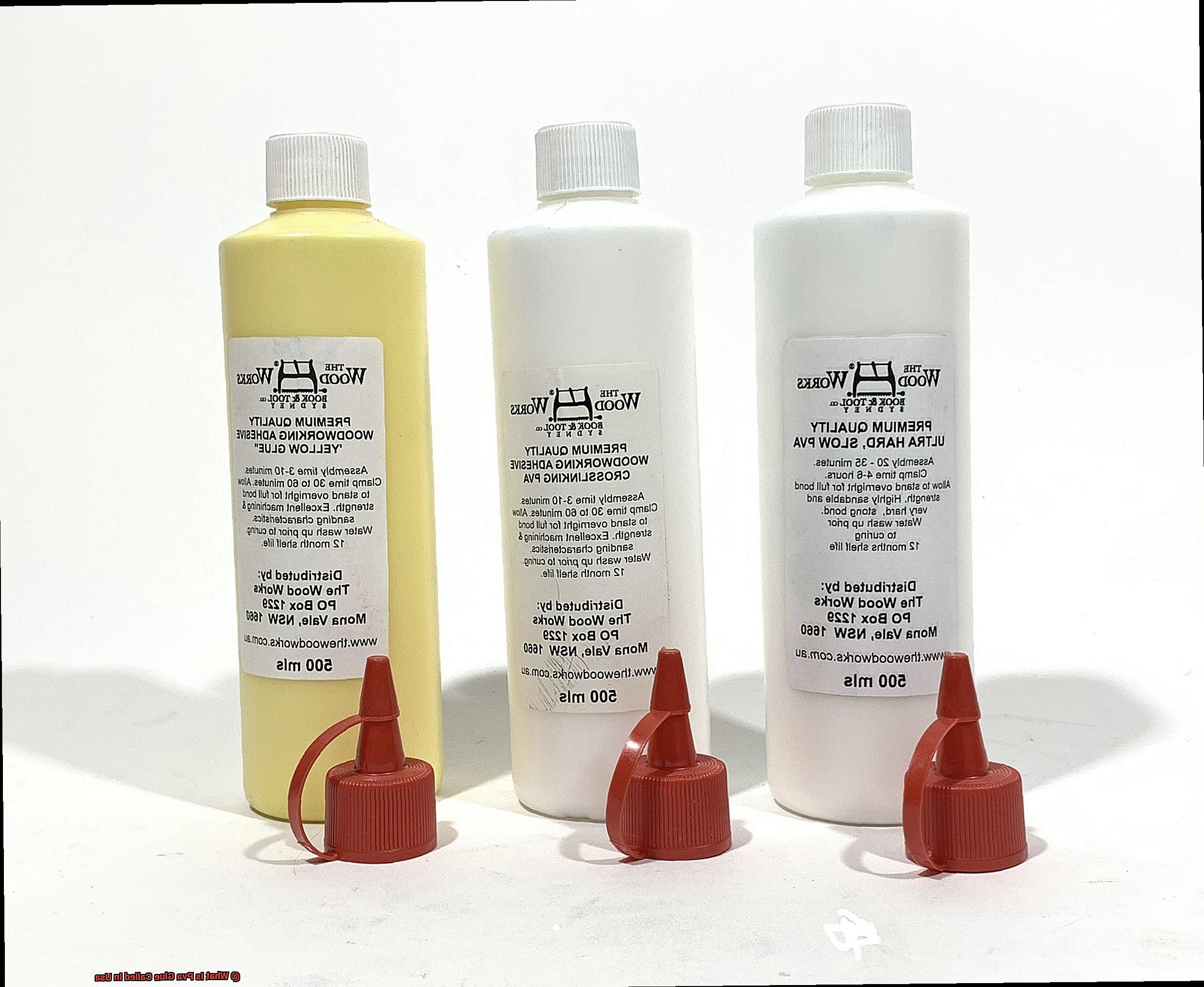
What’s even better is that white glue is generally non-toxic and safe to use, making it perfect for children’s crafts. Just remember to supervise young children and follow the manufacturer’s instructions.
While white glue is an arts and crafts superhero, there may be instances where other types of adhesives, such as epoxy or hot glue, are more suitable for specific projects or materials. It’s always good to have options.
White Glue for Woodworking Projects
Look no further than white glue, the secret weapon in every woodworker’s toolbox. Also known as PVA glue, this powerhouse adhesive is a staple in woodworking projects across the USA. Let me tell you why.
First and foremost, white glue is a force to be reckoned with when it comes to strength. It forms a bond that can withstand heavy loads and resist moisture, making it the go-to choice for a wide range of woodworking applications. Whether you’re fashioning small crafts or constructing large furniture pieces, white glue has your back.
But strength isn’t the only thing that sets white glue apart. Its ease of use is a game-changer. With a relatively long open time, you won’t have to rush when assembling your pieces. This is especially crucial for intricate designs and complex joinery where precise positioning is key. And the best part? Cleanup is a breeze. No need to stress over accidental spills or excess glue – just grab some water and wipe it away.
Now, let’s talk compatibility. White glue plays well with others. It can be used on various types of wood, from hardwoods to softwoods. Thanks to its ability to penetrate porous surfaces, it creates a strong bond with the wood fibers. However, be aware that certain wood species with high oil or resin content may not be the best match for white glue. To be safe, consult an expert or conduct a small test before diving into your project.
One more thing – clamping. Proper clamping is essential when using white glue for woodworking projects. It ensures even pressure across the glued joint, eliminating any gaps and strengthening the connection between the wood pieces. So don’t forget those trusty clamps.
General Household Repairs with White Glue
Today, we’re going to dive into the wonderful world of white glue and explore its magical abilities to fix and mend all sorts of household items. Whether you’re a seasoned woodworker or just a novice looking to tackle some repairs around the house, this guide is here to help you make the most of this versatile adhesive.
The Power of PVA Glue
- PVA glue, also known as white glue or wood glue, is a true superhero in the realm of household repairs.
- It’s perfect for fixing broken wooden furniture, cabinets, and even those beloved wooden toys that have seen better days.
- This adhesive provides a rock-solid bond when applied correctly and allowed to dry fully.
Preparing for Gluing Success
- Before diving into any repair project, it’s crucial to ensure that the surfaces you’re gluing are clean and free from dirt, dust, or grease.
- A simple wipe-down with a damp cloth should do the trick.
Applying White Glue Like a Pro
- To apply PVA glue, use a brush or spreader to evenly coat both surfaces that need to be bonded.
- Remember, a thin layer is enough – you don’t want excess glue squishing out everywhere.
Creating a Strong Bond
- Once the glue is applied, press the two surfaces together firmly and hold them in place until the glue dries completely.
- You can use clamps or heavy objects to maintain pressure during the drying process.
The Art of Drying and Clean-up
- Follow the manufacturer’s instructions regarding drying time. This may vary depending on the brand and type of PVA glue you’re using.
- After the glue has dried, any excess glue that seeped out can be easily removed using a damp cloth or sponge.
Aesthetics and Beyond
The Limitations and When to Seek Professional Advice
- While PVA glue is fantastic for most household repairs, there may be scenarios where it’s not the best adhesive choice.
- If you’re uncertain about a particular material or situation, it’s always wise to consult with a professional or refer to specific product recommendations.
Drying Time and Clean-Up for PVA Glue
Today, we will explore the fascinating world of PVA glue, uncovering its secrets about drying time and clean-up techniques. Prepare to be amazed as we delve into the realm of this adhesive superhero.
Drying Time:
PVA glue is renowned for its impressive drying time. Within just 30 minutes to 1 hour, your glued project will be touch-dry and ready for action. But hold your horses, my friend. Although it may seem dry on the surface, it is wise to wait a full 24 hours before applying any stress or load to ensure a strong bond. Remember, patience is a virtue when it comes to crafting masterpieces.
Need for Speed:
Now, if you’re in a hurry or simply as impatient as I am, fear not. We have a few tricks up our sleeves to accelerate the drying process. Boost the ventilation by using fans or opening windows, allowing air to circulate and evaporate the moisture content faster. Another nifty trick is using a hairdryer set on low heat from a safe distance to gently blow-dry your creation – voila. Quick as a flash.
Clean-Up Techniques:
Let’s move on to the unsung hero of crafting – clean-up. PVA glue is water-soluble, making it a breeze to clean up with plain old water. If you spill or have excess glue, grab a damp cloth or sponge and wipe it away before it dries. Easy peasy.
It’s Dry. What Now?
If you miss your chance and the glue has already dried, don’t fret. Simply soak the affected area in warm soapy water for a while to soften the adhesive. Once it’s nice and soft, apply gentle pressure to remove the glue. Voila. Good as new.
Don’t Forget Your Tools:
Before we wrap up, remember to clean your tools and brushes as soon as you’re done using PVA glue. Rinse them with water, ensuring no glue is left behind. Leaving dried glue on your tools can turn them into stiff and stubborn companions – trust me, it’s not fun.
Fashion Emergency:
Oh no. Accidentally spilled PVA glue on your favorite shirt? Act fast. Rinse the affected area with water immediately. If the glue has already dried, grab a dull knife or spoon and gently scrape off the excess. Once most of it is removed, treat any remaining residue with a stain remover or a mixture of warm water and laundry detergent. Crisis averted.
Materials Not Suitable for Bonding with White Glue
White glue, also known as PVA glue, is a versatile adhesive that can bond a wide range of materials together. However, there are certain materials that are not suitable for bonding with white glue. Let’s explore these limitations in more detail.
- Metal: White glue is designed for porous materials like wood and fabric, but it struggles to create a strong bond on smooth and non-porous metal surfaces. The lack of surface penetration hampers the adhesive properties, resulting in weak bonds that easily break.
- Glass: Similar to metal, glass is also non-porous and provides a slick surface that white glue finds challenging to adhere to. For bonding glass surfaces, it is best to use specialized glass adhesives that are specifically formulated for this purpose.
- Certain Plastics: Low-energy plastics such as polyethylene and polypropylene have low surface energy, making it difficult for white glue to bond effectively. These plastics do not provide the necessary surface for the glue to penetrate and create a strong bond. Using adhesives specifically designed for bonding these plastics is recommended.
- Moisture-Exposed Surfaces: While white glue is water-based and great for many applications, it may not perform well on materials constantly exposed to moisture or high humidity levels. Excessive moisture weakens the adhesive properties of white glue, making it less effective in these environments. Waterproof or moisture-resistant adhesives should be used for such applications.
- Oily/Greasy Surfaces: Oil and grease act as barriers between the adhesive and the material, preventing proper adhesion. It is essential to thoroughly clean and degrease surfaces before applying white glue to ensure a strong bond.
YTehzTgJ1L8″ >
Conclusion
In conclusion, PVA glue, known by various names such as white glue or wood glue, is a jack-of-all-trades adhesive that has found its place in the hearts and toolboxes of Americans. Whether you’re a craft connoisseur, a woodworking wizard, or simply in need of some household fixes, PVA glue is your trusty sidekick.
The true beauty of PVA glue lies in its ability to bond different materials together seamlessly. From delicate paper and soft fabrics to sturdy wood and select plastics, this adhesive creates an unbreakable bond that stands the test of time. Its user-friendly nature makes it a go-to choice for professionals and DIY enthusiasts alike – just grab the bottle and apply with ease.
One of the standout advantages of PVA glue is its non-toxic formula, making it safe for even the tiniest hands to use during arts and crafts projects. Plus, it dries clear as crystal, leaving behind no unsightly residue or telltale signs of glue lines. And if you happen to make a mistake or need some fine-tuning mid-project, fear not. PVA glue is water-soluble, allowing for easy adjustments without compromising precision.
While PVA glue reigns supreme in arts and crafts realms like bookbinding and paper creations, as well as construction and home improvement ventures, there are limits to its powers. It may not be your best bet when it comes to bonding metal or glass surfaces – those situations call for specialized adhesives tailored for the task at hand.
All things considered, PVA glue is an indispensable staple in American households thanks to its versatility, simplicity of use, safety features, and unwavering bonding capabilities.

